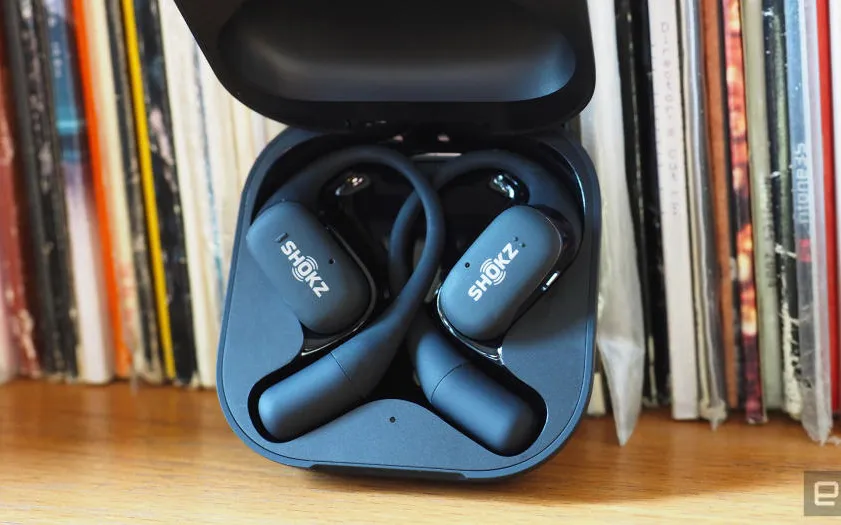OpenFit Offers Open-Ear Audio without Bone Conduction Technology
Shokz, a well-known player in the bone conduction headset market, has decided to switch things up with their latest release. Instead of bone conduction, they have introduced the Shokz OpenFit Bluetooth earbuds, which utilize “air conduction” technology. Priced at $179.95, these earbuds are designed to be worn just outside of the ear with an over-the-ear hook to ensure they stay in place. As a lifestyle headset, they offer the benefits of keeping your hearing open, remaining secure during movement, and being comfortable for extended wear.
OpenFit seems to fill the gap between in-ear sound quality and bone conduction situational awareness. They definitely produce better sound (including bass) than bone conduction models and still allow you to hear what’s going on around you. Of course, they don’t quite replace ear buds, but that wasn’t really the goal. However, I found that with dance music they can be hit or miss, as there is a problem with handling the hard hits of some low-frequency sounds.
Externally, these start from the same side as most similarly designed headphones. They come with a charging case, fit over your ear with a dolphin arch, and don’t look out of the ordinary to a passerby. They are matte black (or beige), made of soft silicone and feel very light. It is not strange to say that you can forget that you are wearing them. They are definitely lighter and more comfortable than the single unit bone conduction models sold by Shokzi, and it’s nice to not have a band on the back.
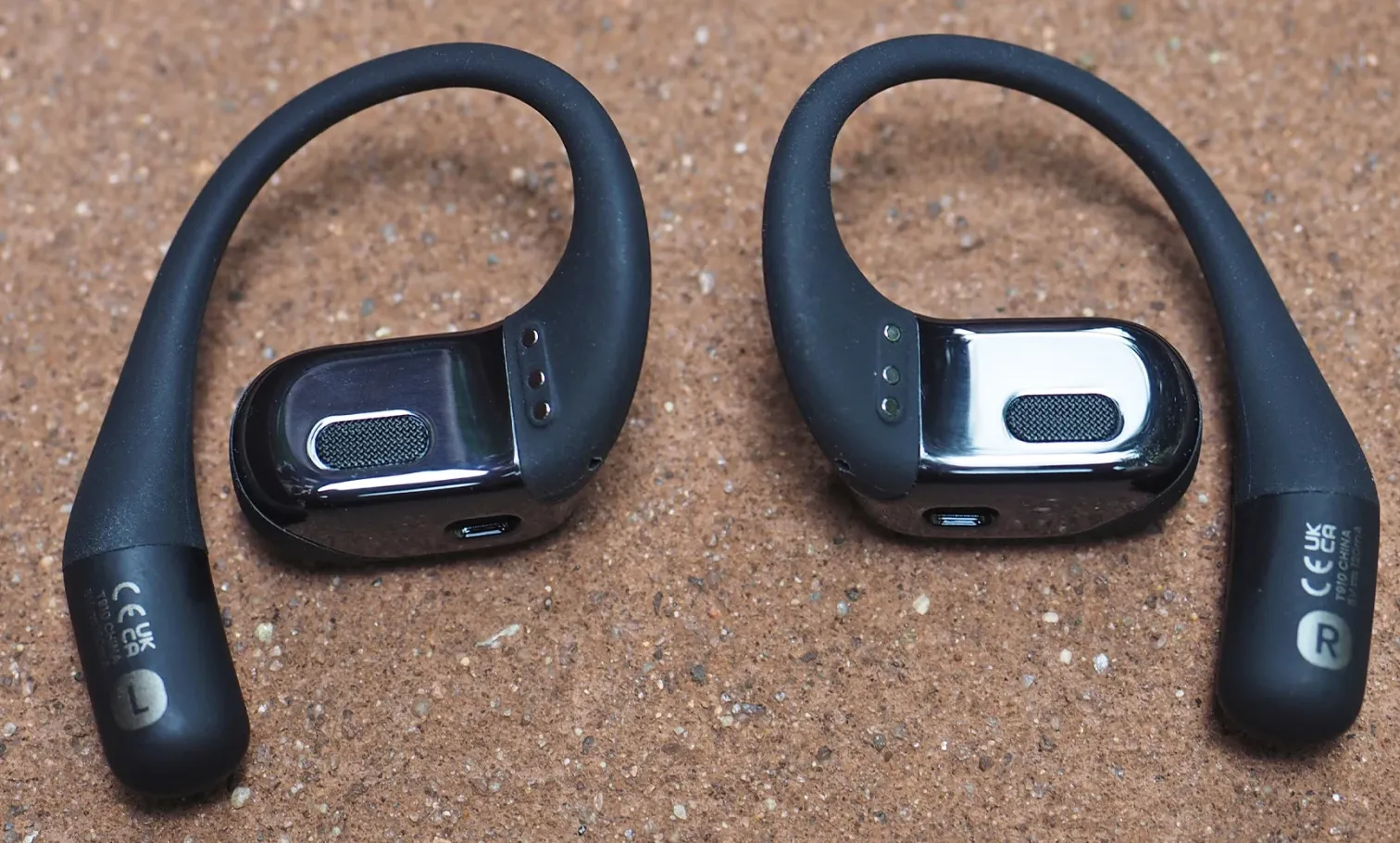
Like many headphones, Shokz has kindly included touch controls, including double-tap and long-press. They respond well to your touches and taps, and you can customize the functionality of iOS or Android apps, even if the latter isn’t ready at launch. You can use one button if you want and keep the other inside the charging case without any problems, although you limit this choice to the touch control setting.
While Shokzi’s previous offerings were primarily aimed at fitness (with the exception of the OpenComm series), OpenFit has been introduced more as a lifestyle product. They are something you can wear during your day without needing digital transparency modes to hear the world. The headphones themselves are IP54 rated, so you’re good to work out in them, but the charging case isn’t. You should try to remember to wipe them off before storing to keep everything in good condition.
The OpenFit and its ear hook seem to work well to keep them in place as well. I wouldn’t worry about them falling off if you run, lift weights, stretch, or engage in physical activity. It might feel like they could since they’re not wedged in your ear, but so far I’ve found them to stay put.
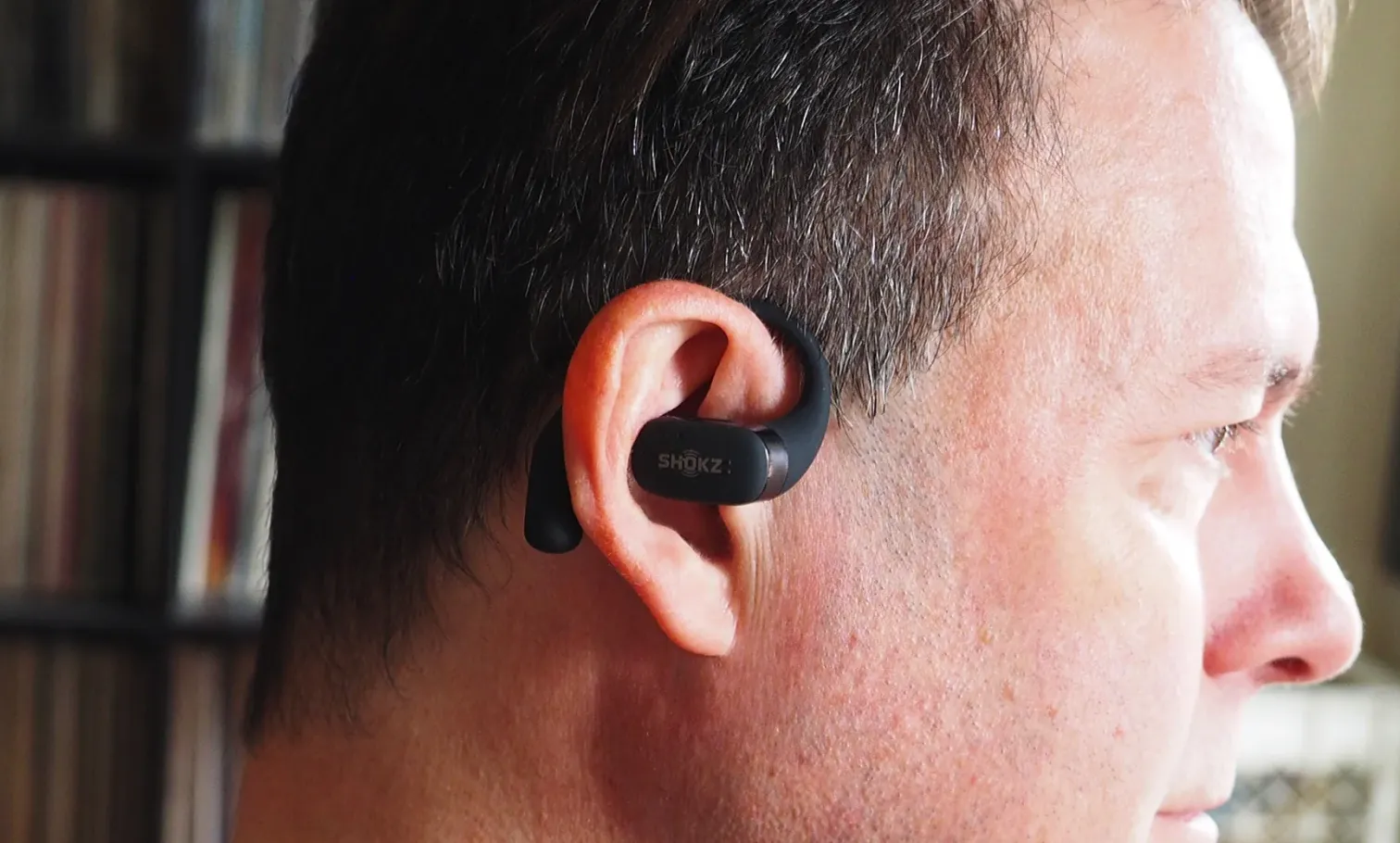
As for the specs, the Shokz OpenFit earbuds have Bluetooth 5.2, have a frequency response of 50Hz to 16kHz, support AAC and SBC codecs, and have 18x11mm custom dynamic drivers inside for output. The buds’ battery life is rated for up to 7 hours of listening on a charge, and the case is said to extend this to up to 28 hours of playback. As with previous Shokz headphones, you get an hour of juice with just a 5-minute charge. It’s great if you notice a low charge before you go for a run with OpenFit and your smartwatch or phone.
One of the common problems with bone conduction headphones has been a lack of bass. Shokz came a long way towards breaking the box with their latest OpeRun Pro headphones. OpenFit are not bone conduction, so it was easier for the company to deliver a high-quality low profile.
If you’re a Shokz fan, you’ll probably enjoy these, especially for everyday use at lower volumes. They work well with music and spoken word, and unlike bone conduction models, you’ll have better luck hearing your music if you’re in a busier environment. Keep in mind, though, that these are still open-ear models, so your listening experience isn’t completely isolated.
I have used these when going to the store and doing other things. If you keep the music playing at normal or low volume, you can enjoy the songs while listening to and chatting with the cashiers and other people around you. While you can answer calls with a double tap, I decided to leave them interactive as a courtesy with a long press.
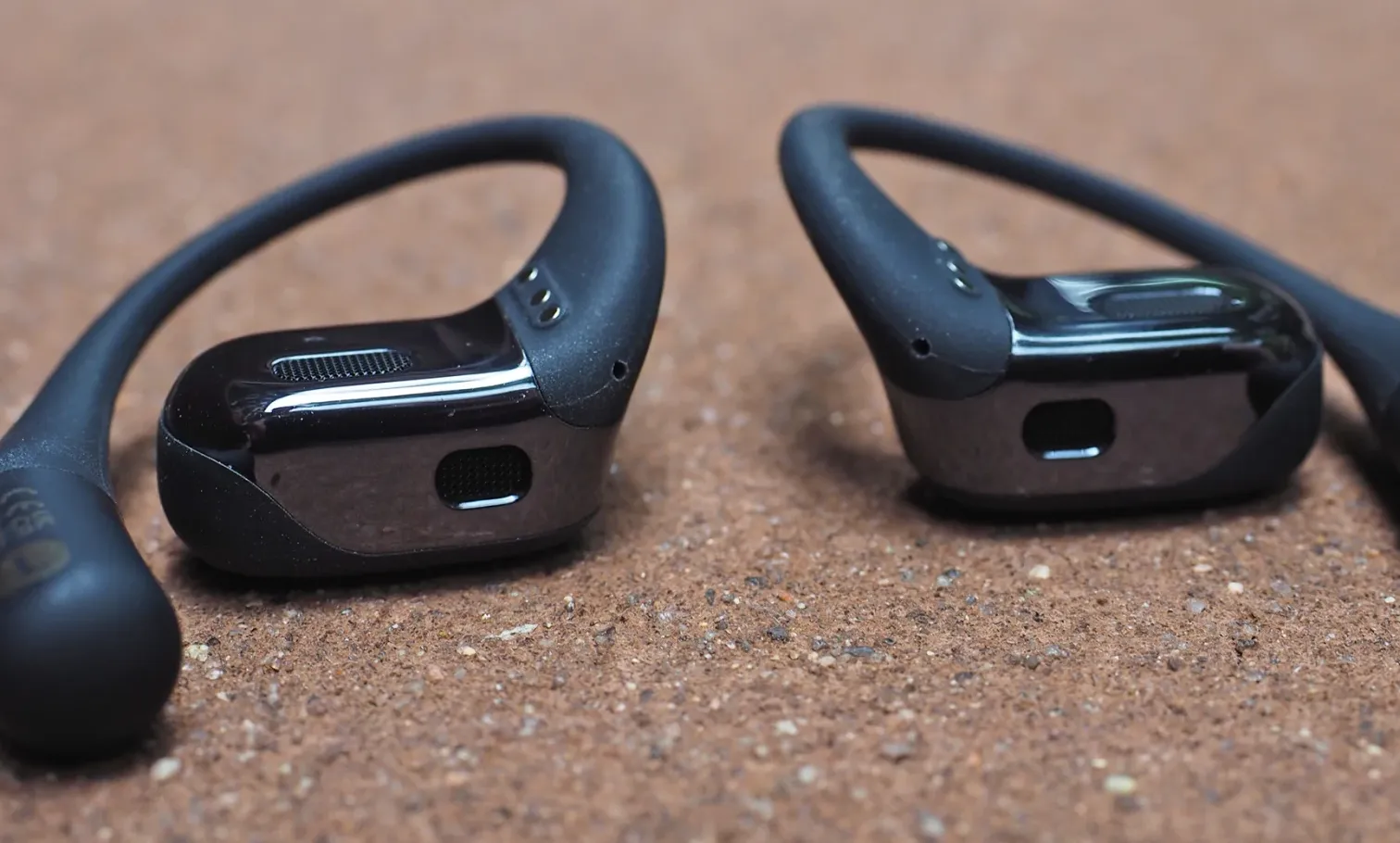
You can even ride your bike while wearing these and still hear what’s going on around you if you’re careful with the volume. However, bone conduction headphones (specifically the Shokz OpenRun Pro) are more optimized situational awareness headphones, leaving both ears visibly open if local laws require restrictions.
If you’re the type to enjoy playing your songs, there are some caveats. The overall listening experience offers rich bass and good mids and highs for this format. But if you tend to listen to dance music or hip hop, you might notice some problems handling some very low kick drums. In some songs that have mostly hard hits in the low frequencies, you may notice a crunchy edge to those rhythms. If you get a chance to test them first, I’ll bring something like this to check your experience.
The Dave Brubeck Quartet’s “Three to Get Ready” was clear and pleasant to listen to, with a natural sound and smooth bass lines. UMC’s “Some Sepak Ill Thoughts” generally sounded good, with a bit of crunch in a certain very low bass line. Listening to both D.I.T.C.’s bass-heavy “Thick (Environmentally Friendly Version)” and the 4/4 techno of Ryan Elliot’s “Fermi II” both raised the kick drum a bit. Radiohead’s “Reckoner” was pleasant to listen to throughout. Apparently it depends on the music and seems to be noticeable only at certain punchy and low frequencies.
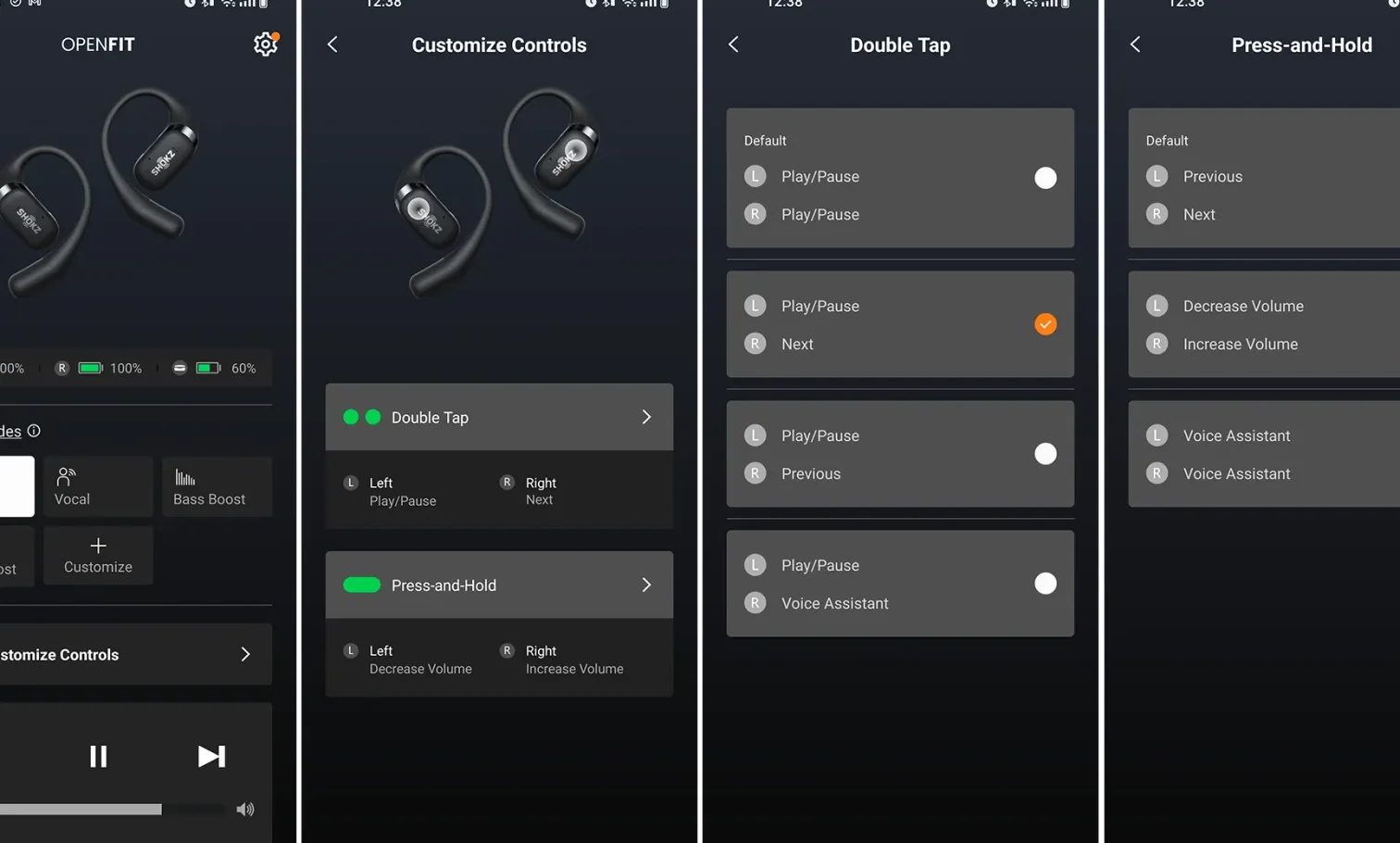
The app that Shokz released for the OpenRun Pro in 2022 now also works with the OpenFit earbuds, and is relatively necessary as there are touch controls you’ll want to customize. An iOS version will be available at launch, with an Android version coming later. The app lets you choose from EQ presets or create your own, customize touch controls, control playback, and view the battery level and charging case of each headphone.
There are two types of touch controls available which are double tap and press and hold. You can choose from ready-made combinations that seem to cover enough options to satisfy most people. They are a mix of play/pause, previous/next, voice assistant and lastly a volume control (which is only available for press and hold).
The standard EQ preset seems to be the most common choice for most listening sessions. Vocal and treble boost are similar, while bass boost only increases the frequency of the low end, but not necessarily its power. Of course, you can use the custom option to find your own sweet spot.

Overall, these sound good in shape, and Shokz fans who enjoy an open ear may appreciate the move away from bone conduction for a change. In casual everyday use, the fit and sound experience are much better, but still offer some situational awareness. The issue with certain low frequencies and drum kicks is my only problem with an otherwise solid listening experience.
The Shokz OpenFit earbuds are available starting today on the company’s website and Amazon for $179.95 in both black and beige.

